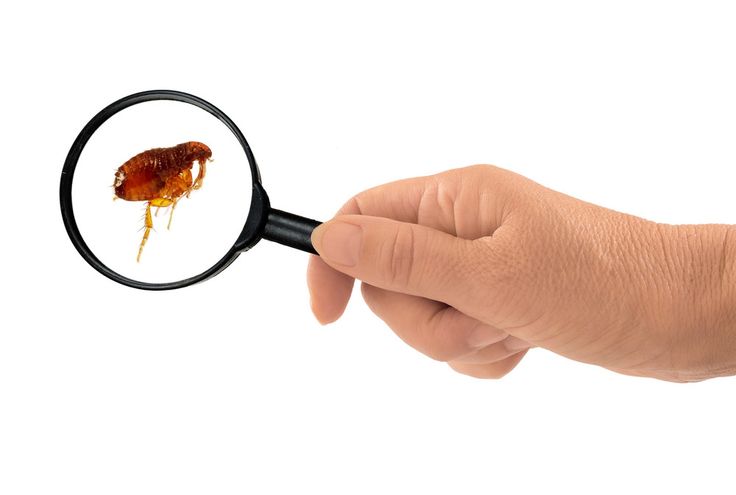Flea Control Strategies Every Pet Owner Should Know

Strong 8k brings an ultra-HD IPTV experience to your living room and your pocket.
Flea control becomes urgent the moment pets begin scratching more than usual or when tiny bites appear on ankles. These persistent pests are small in size but carry a heavy load of discomfort, disease, and infestation potential if not managed quickly.
Fleas control and multiply rapidly, with a single female laying up to fifty eggs daily. That’s why missing just one step in prevention or treatment often leads to a recurring cycle. To truly keep a home flea-free, it's necessary to address both the animal and the environment with equal care.
Why Fleas Find Homes So Appealing
Warm, humid environments attract fleas, especially homes with pets that frequently go outdoors. Carpets, bedding, and soft furniture provide the ideal shelter for larvae to mature undisturbed.
While many associate fleas with neglected animals, even the cleanest homes can experience infestations. Flea control begins with awareness understanding that these pests thrive anywhere they can hide, feed, and reproduce in peace.
Spotting the Signs Before It Becomes an Infestation
Frequent scratching or licking is the first visible clue. Red bumps around the neck, belly, and tail suggest fleas have made themselves at home. But even homes without pets aren't immune.
Fleas often enter on clothing, used furniture, or through nearby wildlife like raccoons, squirrels, or stray cats. Once inside, they settle fast. Catching these signs early gives any flea control plan a much better chance of success.
The Critical Link Between Pet Health and Home Hygiene
Healthy pets are the front line of defense. Regular grooming, vet checkups, and preventive medications limit flea populations before they can spread. But no flea control plan is complete without environmental attention.
Vacuuming rugs, washing bedding in hot water, and treating high-traffic pet areas reduce eggs and larvae that may be hiding out. Fleas thrive in overlooked corners. Combining pet care with household habits delivers the best results in keeping populations under control.
Natural Flea Control Methods That Can Work Long Term
Essential oils like lemongrass and cedar have been used for years to repel fleas safely. When applied carefully through sprays or shampoos, they offer a pet-friendly option for prevention.
Diatomaceous earth, a fine powder made from fossilized algae, can also be used on carpets and outdoor areas to dry out flea eggs and larvae. These natural strategies require consistency and patience but form a solid part of an overall flea control plan.
When Fleas Spread Outdoors: Yard Maintenance Matters
Fleas don't stop at the doorstep. Overgrown grass, shaded corners, and leaf piles provide outdoor breeding grounds. Pets that rest in those spots bring fleas directly into the home.
Regular mowing, clearing debris, and using safe treatments around common pet zones help keep fleas at bay. Outdoor flea control becomes especially important during warm months when populations peak.
Where DIY Falls Short and Professionals Step In
Even with diligent vacuuming, baths, and sprays, fleas often return. That’s usually because eggs and pupae go undetected in deep carpets, behind baseboards, or under furniture. It only takes one cycle to start over.
When that happens, a professional flea control service becomes a smart choice. IPM Pest Solutions offers safe, thorough treatments that address adult fleas, larvae, and the eggs hiding where brooms and sprays can’t reach.
What Makes Fleas So Difficult to Eliminate Completely
Unlike many pests, fleas have a four-stage lifecycle. Eggs hatch into larvae, which then pupate and wait for the right conditions to emerge. Some can remain dormant for weeks in carpets or cracks until they detect warmth or vibration.
This delayed emergence makes one-time treatments ineffective. Flea control that truly works requires follow-up, environmental care, and sometimes even a second round of treatments. Understanding the biology behind their persistence helps create a smarter plan.
Managing Flea Control in Multi-Pet Households
Homes with more than one pet require extra attention. Treating one animal while ignoring others gives fleas a safe place to rebound. Coordinated grooming schedules, shared bedding washes, and consistent treatments across all pets make the difference.
Even if one pet seems unaffected, applying the same flea control method ensures no gaps in protection. Fleas often target animals based on skin warmth or location—not necessarily because one pet is cleaner or dirtier than another.
How IPM Pest Solutions Handles Flea Infestations
The team at IPM Pest Solutions combines inspection, treatment, and education to handle infestations with care. Their process starts with identifying key hiding areas inside and outside the home.
Using targeted products designed for long-lasting impact, they treat not only adult fleas but interrupt the entire lifecycle. Pet-safe and family-friendly options ensure the home becomes a safe, comfortable space again—without leaving behind harmful residues.
Unique Strategies to Prevent Future Problems
Changing small habits prevents fleas from coming back. Removing shoes before entering, washing pet toys regularly, and cleaning under furniture all help break the cycle. Adding these small changes into weekly routines supports long-term flea control.
It also helps to monitor flea activity seasonally. Fleas are most active in spring and summer, so pre-treating your home or pets during these times keeps infestations from building unnoticed.
FAQs About Flea Control
Q1: Can fleas survive without pets in the home?
Yes. Fleas can live for weeks in carpets or furniture, especially in their pupal stage. They will wait for movement or warmth to emerge and search for a host.
Q2: Are over-the-counter flea treatments effective?
Some work temporarily, but they rarely eliminate all stages of the flea lifecycle. A complete solution often includes both pet care and environmental treatment.
Q3: How long does it take to get rid of fleas completely?
With consistent action, noticeable improvement usually occurs within a week or two. Full elimination may take up to a month due to the flea's complex life stages.
Note: IndiBlogHub features both user-submitted and editorial content. We do not verify third-party contributions. Read our Disclaimer and Privacy Policyfor details.


